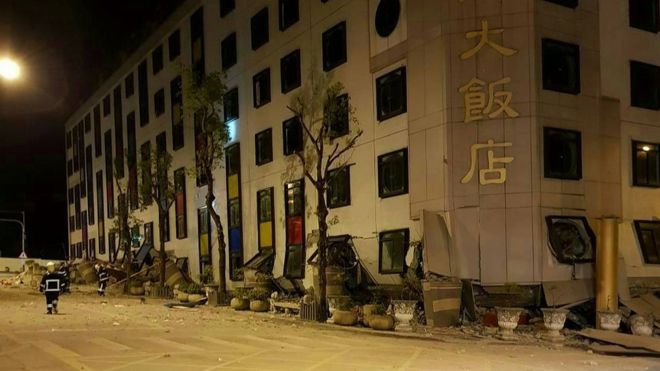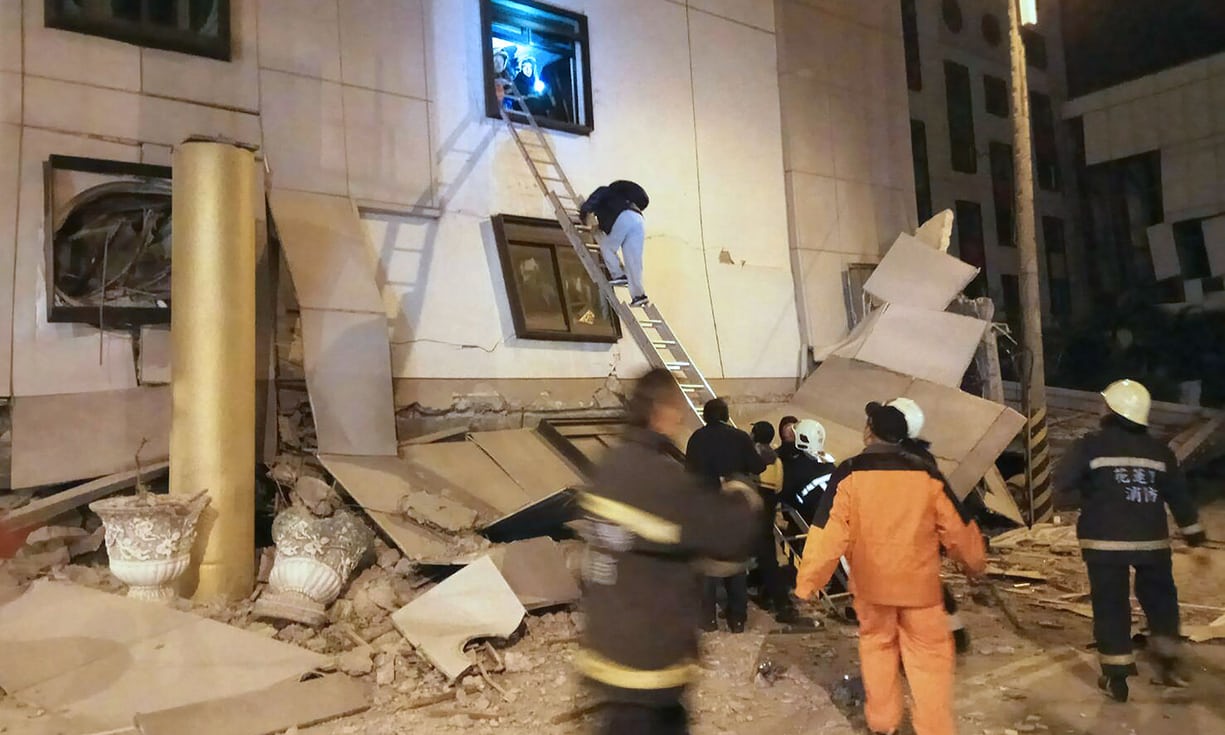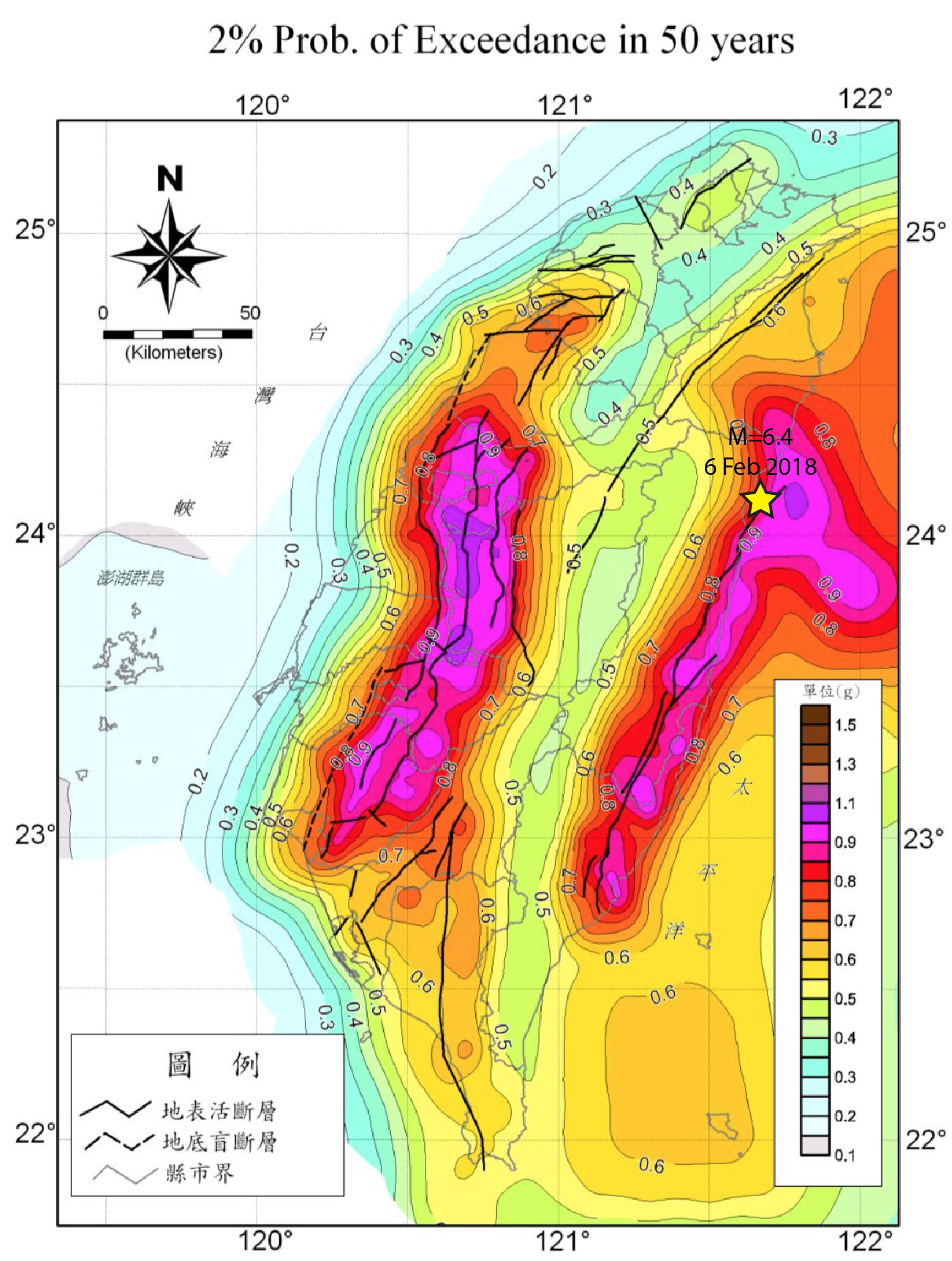By David Jacobson, Temblor

A second large earthquake in 2 days strikes Eastern Taiwan
Just before midnight local time, a M=6.4 earthquake struck Eastern Taiwan, toppling buildings, collapsing ground floors, and buckling streets. The quake, which comes just two days after a M=6.1 approximately 20 km to the southeast, occurred at a depth of 10 km and registered very strong shaking in the city of Hualien according to the Taiwan Central Weather Bureau. Hualien is home to over 100,000 people. Yesterday, when we wrote about the M=6.1 over the weekend, we pointed out that its location marks the intersection of the Longitudinal Valley Fault and the Ryukyu Trench. Because of this, the area is prone to experiencing large magnitude earthquakes, meaning this quake should not be considered surprising. Further, earthquakes at fault junctions and tips are slightly more likely to trigger still larger shocks than others.

Significant damage within Hualien


Based on early reports and pictures, there is significant damage in Hualien, at least two people are confirmed to have been killed, and over 200 people were injured, 27 of them seriously according to the New York Times. Additionally, NPR announced that seven buildings had collapsed and while people remain trapped beneath the collapsed buildings, the National Fire Agency announced that they had rescued 149 people trapped in the rubble. However, people remain trapped in a partially-collapsed hotel. The photos above show some of the major damage sustained in the earthquake.
The reported damage is higher than forecast by the USGS PAGER system, which anticipated less than $1 million in damage. This is likely due to an underestimation of the amount of shaking around Hualien. The ShakeMap produced by Taiwan’s Central Weather Bureau can be seen below.

A yet-larger earthquake could still occur

While the earthquake over the weekend was predominantly compressional in nature, today’s event was nearly pure strike-slip, according to both the USGS and GFZ-Potsdam. Because of this, today’s quake may have struck at the northern tip of the Longitudinal Valley Fault, which is known to have both compressional and left-lateral motion. As we said yesterday, 30% of all earthquakes in Taiwan occur on or near this fault. It also has the highest slip rate of all faults in Taiwan.
Domino Theory?
While the M=6.4 shock occurred offshore at the northern tip of the Longitudinal Valley Fault, several of its large aftershocks occurred 20 km (12 miles) to the south, beneath Hualien, also on or near the Longitudinal Valley Fault. So, there appears to be a seismic propagation of aftershocks along the Longitudinal Valley Fault. This raises concerns that these events themselves could be foreshocks to still larger earthquakes that could rupture south along Taiwan’s longest, and most active fault.
Today’s shock should not come as a surprise. The Taiwan Earthquake Model, a university, government, and industry consortium that uses the tools and libraries of the Global Earthquake Model (GEM Foundation), is shown below. The area around the recent earthquakes has one of the highest hazards in the entire country. Therefore, residents of Eastern Taiwan should be prepared for potentially larger, more damaging earthquakes, perhaps propagating to the south.

The video above shows damage sustained in today’s M=6.4 earthquake near the city of Hualien
References
Taiwan’s Central Weather Bureau
EMSC
Taiwan Earthquake Model from, Thomas (Chin-Tung) Cheng et al., Disaster Prevention Technology Research Center, Sinotech Engineering Consultants, Inc. – Link
Kate Huihsuan Chen, Shinji Toda, and Ruey-Juin Rau, A leaping, triggered sequence along a segmented fault: The 1951 ML 7.3 Hualien-Taitung earthquake sequence in eastern Taiwan, JOURNAL OF GEOPHYSICAL RESEARCH, VOL. 113, B02304, doi:10.1029/2007JB005048, 2008
USGS
BBC
New York Times
The Guardian
NPR
-
ډیری عوامل افغاني ټولنې د زلزلې پر وړاندې زیانمنوي
- August 11, 2022 - What’s happening this week in Humboldt County, California: The squeeze - February 6, 2019
- Finding of the unexpected tsunami due to the strike-slip fault at central Sulawesi, Indonesia on 28 September 2018, from the preliminary field survey at Palu - October 15, 2018
